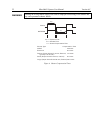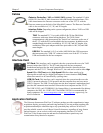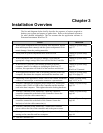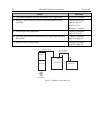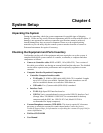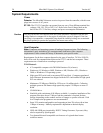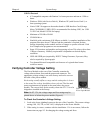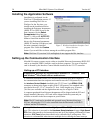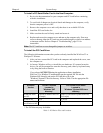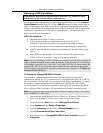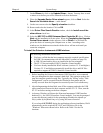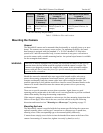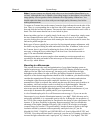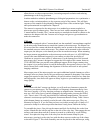
Chapter 4 System Setup 29
USB 2.0 Protocol:
• AT-com
patible computer with Pentium 3 or better processor and runs at 1 GHz or
better.
• Windows 2000 (with Service Pack 4), Windows XP (with Service Pack 1) or
later operating sy
stem.
• Native USB 2.0 support on the m
other board or USB Interface Card (Orange
Micro 70USB90011 USB2.0 PCI is recommended for desktop; SIIG, Inc. USB
2.0 PC Card, Model US2246 for laptop)
• Minim
um of 256 Mb of RAM.
• CD-ROM drive.
• Hard disk with a m
inimum of 80 Mbytes available. A complete installation of the
program files takes about 17 Mbytes and the remainder is required for data
storage, depending on the number and size of images or spectra collected. Disk
level compression programs are not recommended.
• Super VGA m
onitor and graphics card supporting at least 256 colors with at least
1 Mbyte of memory. Memory requirement is dependent on desired display
resolution.
• IEEE-488 GPIB port (required by
DG535 Timing Generator, if present). May
also be required by Spectrograph.
• Two-button Microsoft com
patible serial mouse or Logitech three-button
serial/bus mouse.
Verifying Controller Voltage Setting
The Power Module on the rear of the Controller contains the
voltage selector drum, fuses and the powercord connector. The
appropriate voltage setting is set at the factory and can be seen on
the back of the power module.
Each setting actually defines a range and the setting that is closest
to the actual line voltage should have been selected. The fuse and
power requirem
ents are printed on the panel above the power
module. The correct fuses for the country where the ST-133 is to be
shipped are installed at the factory.
Note: On ST-133s, the voltage ranges and fuse ratings may be
printed above or below the power module (Figure 6).
Figure 6. Controller
Power Input Module
To Check the Controller's Voltage Setting:
1. Look at the lower righthand corner on the rear of the Controller. The current voltage
setting (100, 120, 220, or 240 VAC) is display
ed on the Power Module.
2. If the setting is correct, continue with the installation. If it is not correct, follow the
instructions on page
113 for changing the voltage setting and fuses.




